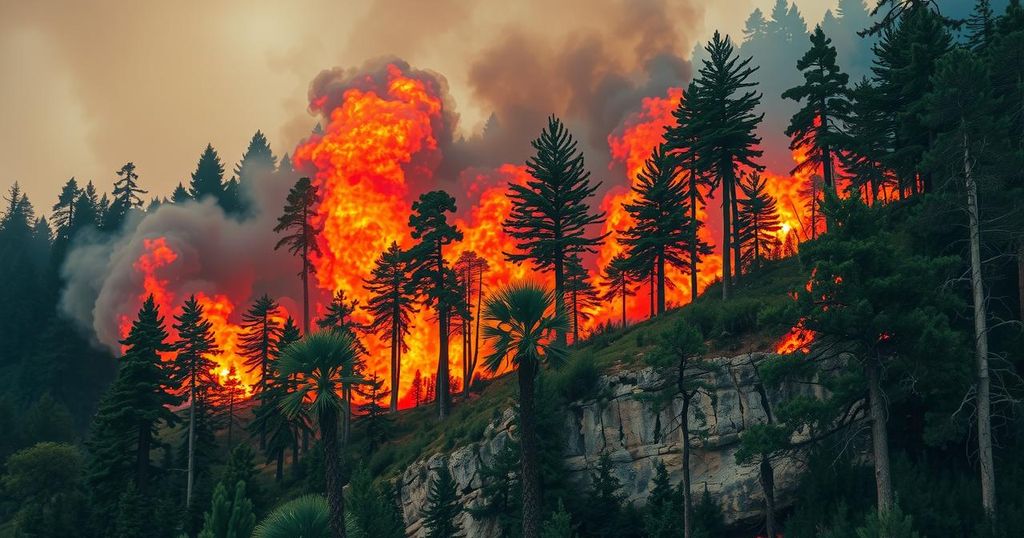The article argues that while extended hot, dry weather increases wildfire risk, recent wildfires cannot be solely attributed to climate change. Historical evidence suggests natural climate cycles have long influenced fire activity. Human activities play a significant role in initiating most wildfires. Effective wildfire mitigation requires a nuanced understanding of ecological variables, historical trends, and human influences, rather than attributing causes directly to climate change.
The assertion that climate change is the primary cause of devastating wildfires is a misconception. Extended periods of heat and drought create conditions that foster intense forest fires, but recent evidence suggests that these conditions have historically arisen from natural climate cycles. While climate models indicate that human-induced global warming may increase these weather patterns, wildfires have occurred for thousands of years due to naturally fluctuating climate conditions.
Historical analysis reveals that significant wildfires in the Western United States have been documented as far back as the Medieval Warm Period, with varying severity influenced by natural variability rather than solely by anthropogenic factors. Research indicates that landscape changes, such as logging, farming, and urban development, have drastically altered fire behaviors and wildlife interactions, exacerbating fire risks since the 1800s.
Data from Western states, beginning in 1916, illustrate that the scale of forest fires from the early 20th century is comparable to the fire activities seen in the early 2000s, dispelling notions of a steady uptick in wildfire severity. Notably, most forest fires initiated historically were traced back to human activities, underscoring the substantial role humans play in igniting these blazes.
As of 2021, human causes were attributed to approximately 75% of wildfires in Oregon and Washington, revealing a significant increase in human-related ignitions. A disturbing trend of arson fires has been evident since the 1950s, which complicates efforts to mitigate wildfire risk and identify underlying causes.
Further assertions linking increased pest infestations to climate change overlook the contribution of human forestry practices, with reduced timber harvesting and enhanced fire suppression being primary factors influencing these infestations. Historical context alongside environmental shifts such as El Niño events demonstrates that extreme weather patterns impacting wildfires in the U.S. are consistent with historical climate behavior rather than solely climate change.
In summary, while climate models predict potential increases in wildfire conditions due to climate change, recent evidence strongly suggests that the severity and frequency of current wildfires are heavily influenced by human behavior, societal development, and historical climate variability. Therefore, addressing the risk of wildfires requires a multifaceted understanding of ecological, historical, and human factors rather than attributing these crises directly to climate change.
The topic of climate change and its connection to wildfires is complex and often misrepresented. While climate models suggest that global warming could lead to an increased incidence of extreme weather conducive to wildfires, many environmental historians and scientists contend that wildfires have been influenced by natural climate variability for millennia. Factors such as human practices in land use, forestry, and fire suppression techniques have been critical in shaping the landscape and fire dynamics that we observe today. Recognizing the historical occurrence of severe wildfires is essential in understanding the present context of wildfire management and mitigation strategies.
In conclusion, attributing the recent spate of wildfires solely to climate change fails to account for the significant historical and anthropogenic influences that have shaped fire dynamics in the United States. Historical data and research emphasize the persistent role of human activities in igniting wildfires while suggesting that natural cycles have long influenced fire regimes. To effectively combat the risks associated with wildfires, a comprehensive understanding of both natural and human factors is imperative for future wildfire management and policy-making.
Original Source: www.dailysignal.com






